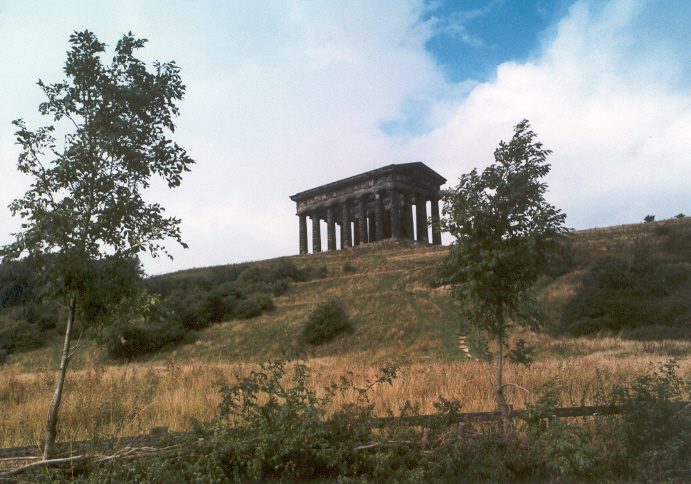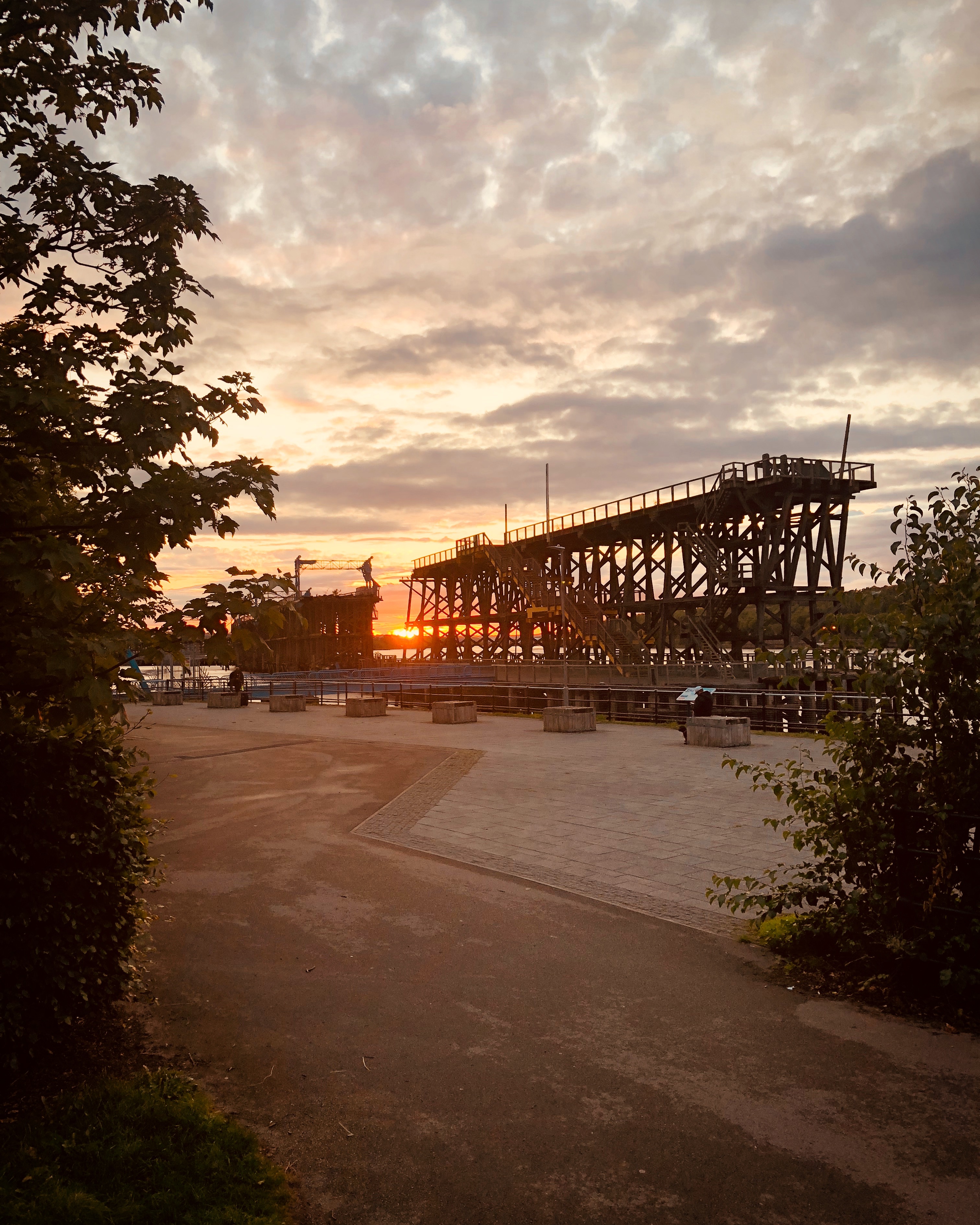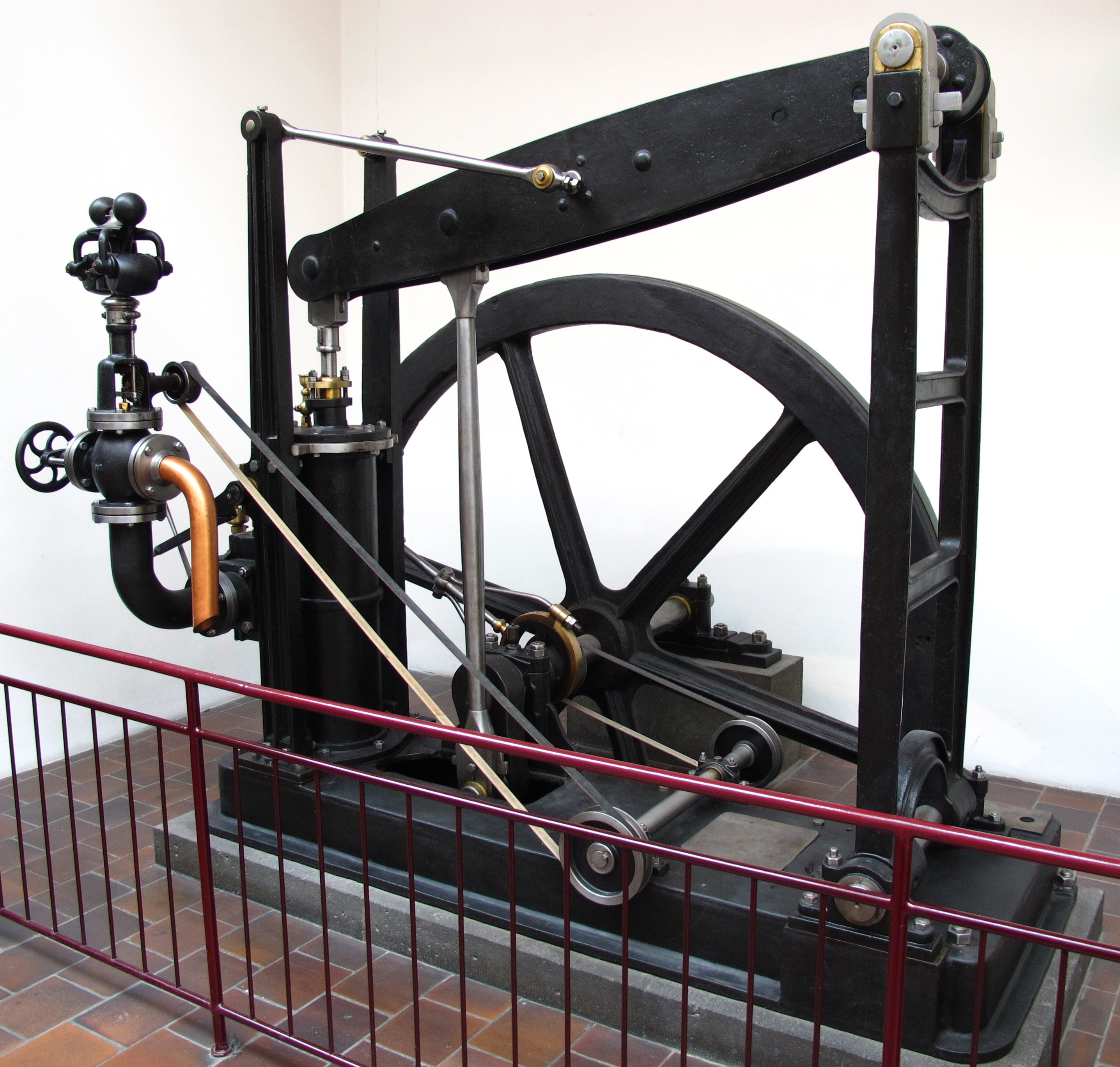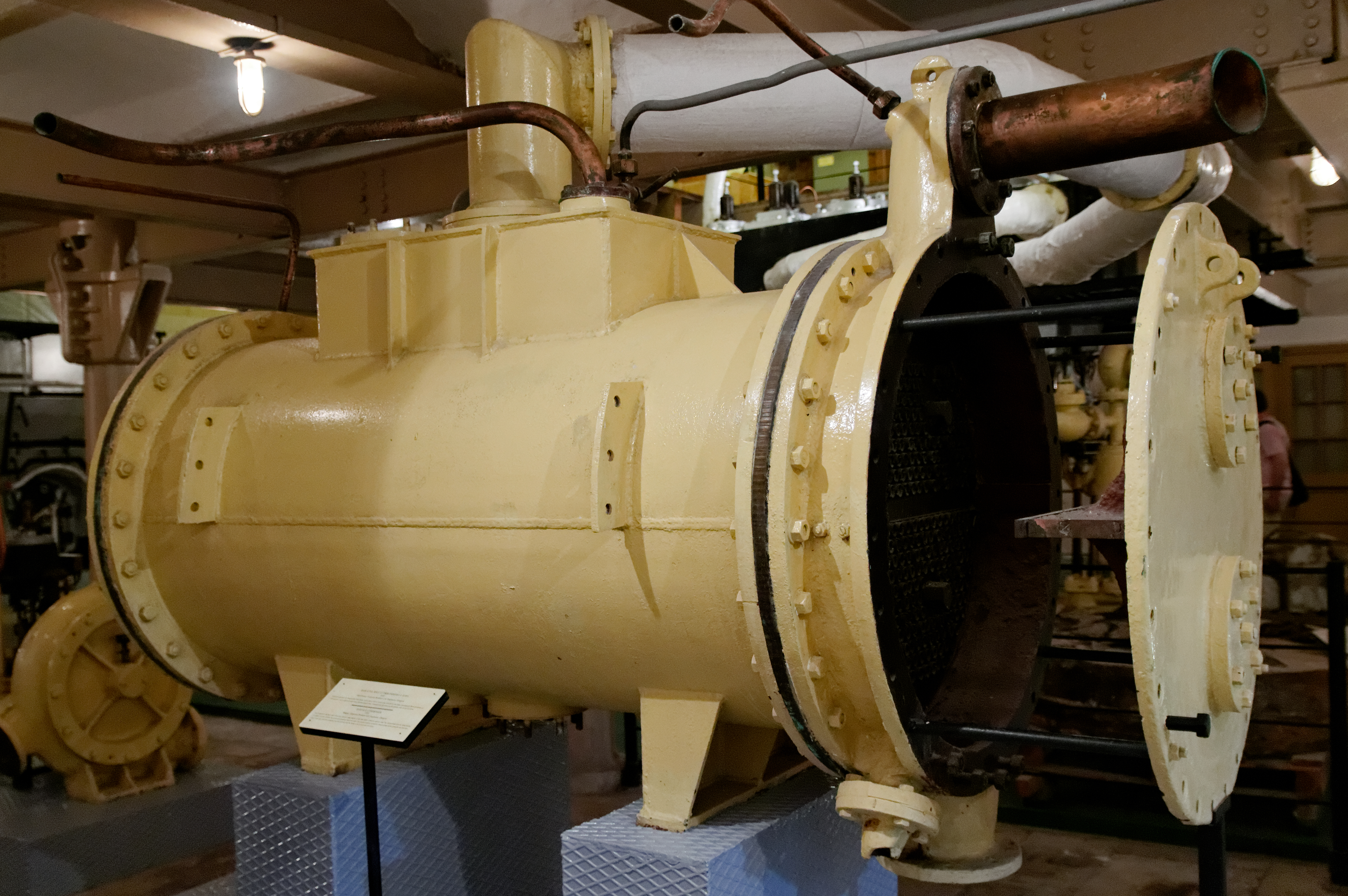|
Eppleton Hall (1914), Eppleton Hall
''Eppleton Hall'' is a Paddle steamer, paddlewheel tugboat built in England in 1914. The only remaining intact example of a River Tyne, Tyne-built paddle tug, and one of only two surviving British-built paddle tugs (the other being the former Tees Conservancy Commissioners' vessel, ), she is preserved at the San Francisco Maritime National Historical Park in San Francisco, California. History ''Eppleton Hall'' was built in 1914 by Hepple and Company of South Shields, for the Lambton Collieries, Lambton and Hetton Collieries Ltd, and named after the house near Penshaw owned by the Hetton Coal Company. She was designed to tow seagoing Collier (ship), colliers from sea to wharf side and back, primarily in the River Wear and to and from the River Tyne. For sailing ships this saved time, while for larger steam and motor vessels it saved navigation and pilotage costs. She was also used to tow newly built ships out to the North Sea. She is one of two survivors of a once-numerous type o ... [...More Info...] [...Related Items...] OR: [Wikipedia] [Google] [Baidu] |
Scott Newhall
Scott Newhall (January 21, 1914 – October 26, 1992) was a newspaper editor known for his stewardship of the ''San Francisco Chronicle''. Early life Scott Newhall was born on January 21, 1914, into the family that owned the Newhall Land and Farming Company. He grew up in San Rafael, California, San Rafael, San Francisco, and Berkeley, California, Berkeley, attending Tamalpais School for Boys, Tamalpais High School, San Rafael Military Academy, and the The Webb Schools, Webb School of California for boys. In 1933, in the midst of his sophomore year at U.C. Berkeley, he married Ruth Waldo. Newspaper career In 1934, Newhall joined the ''San Francisco Chronicle'' as a photographer. By 1952—when the ''Chronicle''s circulation was 155,000, languishing behind those of the ''San Francisco Examiner'' and the ''San Francisco Call-Bulletin''—he was promoted from Sunday editor to executive editor, with the goal of increasing circulation, a goal he achieved by enhancing serious news cover ... [...More Info...] [...Related Items...] OR: [Wikipedia] [Google] [Baidu] |
Penshaw
The village of Penshaw , formerly known as ''Painshaw'' or ''Pensher'', is an area of the metropolitan district of the City of Sunderland, in Tyne and Wear, England. Historically, Penshaw was located in County Durham. Name and etymology The name ''Penshaw'' was recorded in the 1190s as ''Pencher'' and is of Brittonic origin. The first element is ''pen'', meaning 'hill' or 'summit' and the second ''*cerr/*carr'' - 'stone, hard surface'. Features Penshaw is well known locally for Penshaw Monument, a prominent landmark built in 1844 atop Penshaw Hill, which is a half-scale replica of the Temple of Hephaestus in Athens. Owing to its proximity to Durham City, the area was allocated a Durham postcode, DH4, which forms part of the Houghton-le-Spring post town. It lies about three miles north of Houghton-le-Spring, just over the River Wear from Washington. It borders Herrington Country Park and is surrounded by a series of villages: Herrington, Shiney Row, Biddick, Coxgreen an ... [...More Info...] [...Related Items...] OR: [Wikipedia] [Google] [Baidu] |
Dunston, Tyne And Wear
Dunston is a western area of the town of Gateshead on the south bank of the River Tyne, in the Metropolitan Borough of Gateshead, North East England (into which it was absorbed in 1974). Dunston had a population of 18,326 at the 2011 Census. History It has been speculated that Dunston started its existence as a farm or estate of a man named Dunn. Historically part of County Durham, Dunston was first mentioned in 1328. Salmon fishing and farming were important industries in Dunston from at least the 14th century. Coal mining on a small-scale was also important but by the 17th century, the proximity of the river aided the development of large-scale coal mining in the village. During the Great Tyne Flood of 1771 villagers had to be rescued by boat from the roofs and upper stories of their houses. Area Dunston is served by Dunston railway station on the Tyne Valley Line. Dunston is split into two areas separated by the A1 dual carriageway. Much of the area south of the ... [...More Info...] [...Related Items...] OR: [Wikipedia] [Google] [Baidu] |
Seaham
Seaham is a seaside town in County Durham, England. Located on the Durham Coast, Seaham is situated south of Sunderland and east of Durham. The town grew from the late 19th century onwards as a result of investments in its harbour and coal mines. The town is twinned with the German town of Gerlingen. History The original village of Seaham has all but vanished; it lay between St Mary's Church and Seaham Hall (i.e. somewhat to the north of the current town centre). The parish church, St Mary the Virgin, has a late 7th century. The Anglian nave resembling the church at Escomb in many respects, and is one of the 20 oldest surviving churches in the UK. Until the early years of the 19th century, Seaham was a small rural agricultural farming community whose only claim to fame was that the local landowner's daughter, Anne Isabella Milbanke, was married at Seaham Hall to Lord Byron, on 2 January 1815. Byron began writing his ''Hebrew Melodies'' at Seaham and they were publish ... [...More Info...] [...Related Items...] OR: [Wikipedia] [Google] [Baidu] |
Sunderland, Tyne And Wear
Sunderland () is a port city in Tyne and Wear, England. It is the City of Sunderland's administrative centre and in the historic county of Durham. The city is from Newcastle-upon-Tyne and is on the River Wear's mouth to the North Sea. The river also flows through Durham roughly south-west of Sunderland City Centre. It is the only other city in the county and the second largest settlement in the North East after Newcastle upon Tyne. Locals from the city are sometimes known as Mackems. The term originated as recently as the early 1980s; its use and acceptance by residents, particularly among the older generations, is not universal. At one time, ships built on the Wear were called "Jamies", in contrast with those from the Tyne, which were known as "Geordies", although in the case of "Jamie" it is not known whether this was ever extended to people. There were three original settlements by the River's mouth which are part of the modern-day city: Monkwearmouth, settled in 674 ... [...More Info...] [...Related Items...] OR: [Wikipedia] [Google] [Baidu] |
National Coal Board
The National Coal Board (NCB) was the statutory corporation created to run the nationalised coal mining industry in the United Kingdom. Set up under the Coal Industry Nationalisation Act 1946, it took over the United Kingdom's collieries on "vesting day", 1 January 1947. In 1987, the NCB was renamed the British Coal Corporation, and its assets were subsequently privatised. Background Collieries were taken under government control during the First and Second World Wars. The Sankey Commission in 1919 gave R. H. Tawney, Sidney Webb and Sir Leo Chiozza Money the opportunity to advocate nationalisation, but it was rejected. Coal reserves were nationalised during the war in 1942 and placed under the control of the Coal Commission, but the mining industry remained in private hands. At the time, many coal companies were small, although some consolidation had taken place in the years before the war. Formation and organisation The NCB was one of a number of public corporations cr ... [...More Info...] [...Related Items...] OR: [Wikipedia] [Google] [Baidu] |
Nationalization
Nationalization (nationalisation in British English) is the process of transforming privately-owned assets into public assets by bringing them under the public ownership of a national government or state. Nationalization usually refers to private assets or to assets owned by lower levels of government (such as municipalities) being transferred to the state. Nationalization contrasts with privatization and with demutualization. When previously nationalized assets are privatized and subsequently returned to public ownership at a later stage, they are said to have undergone renationalization. Industries often subject to nationalization include the commanding heights of the economy – telecommunications, electric power, fossil fuels, railways, airlines, iron ore, media, postal services, banks, and water – though, in many jurisdictions, many such entities have no history of private ownership. Nationalization may occur with or without financial compensation to the former owners. ... [...More Info...] [...Related Items...] OR: [Wikipedia] [Google] [Baidu] |
Historic American Engineering Record
Heritage Documentation Programs (HDP) is a division of the U.S. National Park Service (NPS) responsible for administering the Historic American Buildings Survey (HABS), Historic American Engineering Record (HAER), and Historic American Landscapes Survey (HALS). These programs were established to document historic places in the United States. Records consist of measured drawings, archival photographs, and written reports, and are archived in the Prints and Photographs Division of the Library of Congress. Historic American Buildings Survey In 1933, NPS established the Historic American Buildings Survey following a proposal by Charles E. Peterson, a young landscape architect in the agency. It was founded as a constructive make-work program for architects, draftsmen and photographers left jobless by the Great Depression. It was supported through the Historic Sites Act of 1935. Guided by field instructions from Washington, D.C., the first HABS recorders were tasked with docume ... [...More Info...] [...Related Items...] OR: [Wikipedia] [Google] [Baidu] |
Grasshopper Beam Engine
Grasshopper beam engines are beam engines that are pivoted at one end, rather than in the centre. Usually the connecting rod to the crankshaft is placed ''between'' the piston and the beam's pivot. That is, they use a second-class lever, rather than the usual first-class lever. Origins The first recorded example of a grasshopper beam was William Murdoch's model steam carriage of 1784. The beam offered negligible mechanical advantage and appears to have been used primarily instead of a crosshead, for what was effectively a return connecting rod engine. The American engineer Oliver Evans drew a high-pressure marine grasshopper engine in 1801,A concept similar to Trevithick's high-pressure locomotive of the same period. and in 1805 built the '' Oruktor Amphibolos'', an amphibious dredger. Almost all grasshopper engines placed the crankshaft between the piston and the beam's pivot. This allows a long stroke for the piston, with a shorter stroke for the crank, although with greater ... [...More Info...] [...Related Items...] OR: [Wikipedia] [Google] [Baidu] |
Marine Steam Engine
A marine steam engine is a steam engine that is used to power a ship or boat. This article deals mainly with marine steam engines of the reciprocating type, which were in use from the inception of the steamboat in the early 19th century to their last years of large-scale manufacture during World War II. Reciprocating steam engines were progressively replaced in marine applications during the 20th century by steam turbines and marine diesel engines. History The first commercially successful steam engine was developed by Thomas Newcomen in 1712. The steam engine improvements brought forth by James Watt in the later half of the 18th century greatly improved steam engine efficiency and allowed more compact engine arrangements. Successful adaptation of the steam engine to marine applications in England would have to wait until almost a century after Newcomen, when Scottish engineer William Symington built the world's "first practical steamboat", the '' Charlotte Dundas'', in 1802. Ri ... [...More Info...] [...Related Items...] OR: [Wikipedia] [Google] [Baidu] |
Surface Condenser
A surface condenser is a water-cooled shell and tube heat exchanger installed to condense exhaust steam from a steam turbine in thermal power stations. These condensers are heat exchangers which convert steam from its gaseous to its liquid state at a pressure below atmospheric pressure. Where cooling water is in short supply, an air-cooled condenser is often used. An air-cooled condenser is however, significantly more expensive and cannot achieve as low a steam turbine exhaust pressure (and temperature) as a water-cooled surface condenser. Surface condensers are also used in applications and industries other than the condensing of steam turbine exhaust in power plants. Purpose In thermal power plants, the purpose of a surface condenser is to condense the exhaust steam from a steam turbine to obtain maximum efficiency, and also to convert the turbine exhaust steam into pure water (referred to as steam condensate) so that it may be reused in the steam generator or boiler as boiler ... [...More Info...] [...Related Items...] OR: [Wikipedia] [Google] [Baidu] |
North Sea
The North Sea lies between Great Britain, Norway, Denmark, Germany, the Netherlands and Belgium. An epeiric sea on the European continental shelf, it connects to the Atlantic Ocean through the English Channel in the south and the Norwegian Sea in the north. It is more than long and wide, covering . It hosts key north European shipping lanes and is a major fishery. The coast is a popular destination for recreation and tourism in bordering countries, and a rich source of energy resources, including wind and wave power. The North Sea has featured prominently in geopolitical and military affairs, particularly in Northern Europe, from the Middle Ages to the modern era. It was also important globally through the power northern Europeans projected worldwide during much of the Middle Ages and into the modern era. The North Sea was the centre of the Vikings' rise. The Hanseatic League, the Dutch Republic, and the British each sought to gain command of the North Sea and access t ... [...More Info...] [...Related Items...] OR: [Wikipedia] [Google] [Baidu] |





_Team.jpg)


